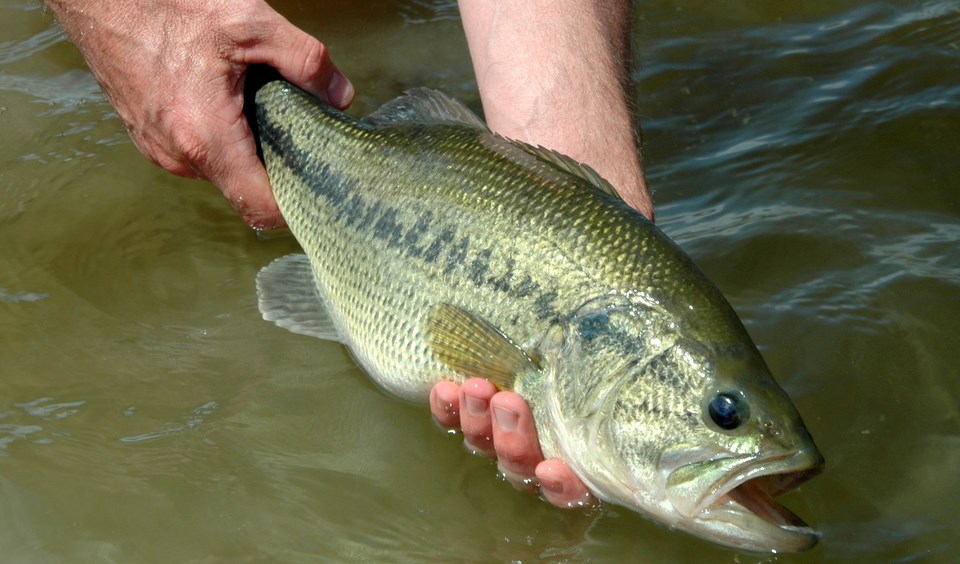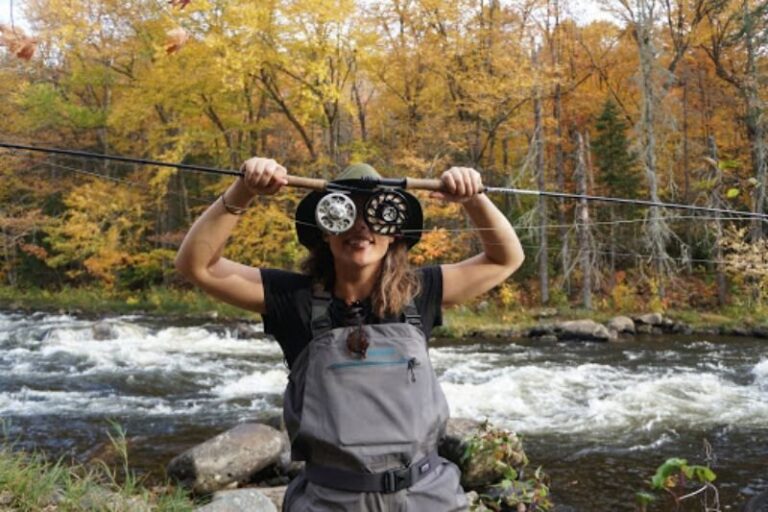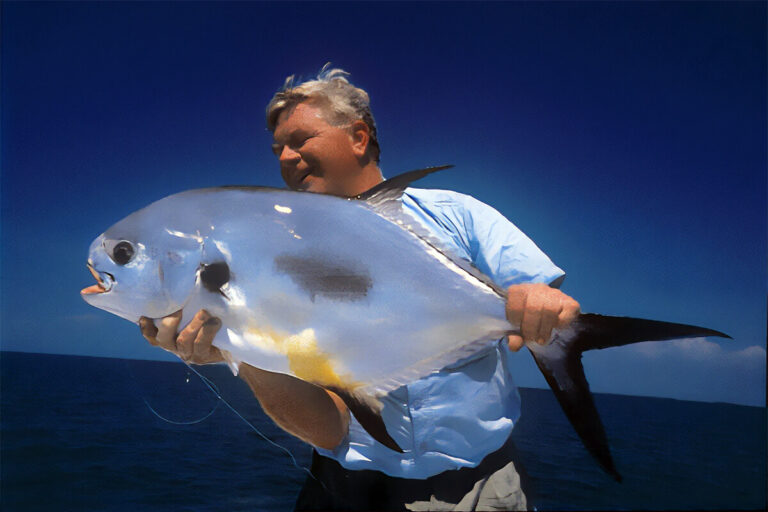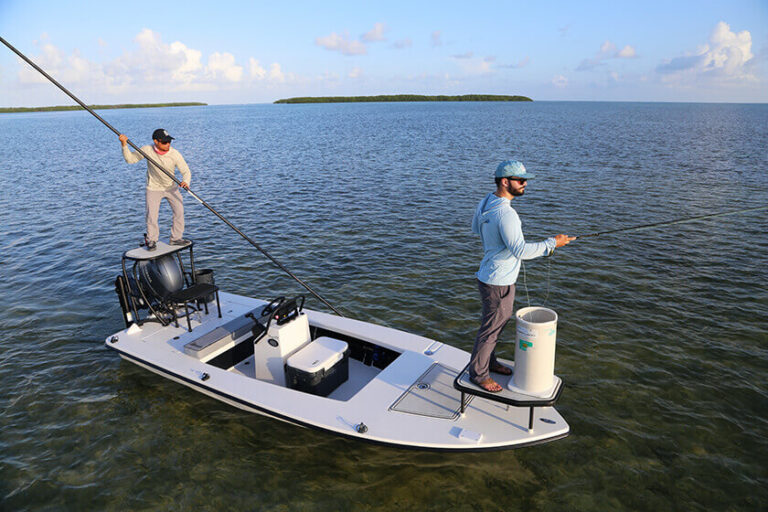To practice catch and release while flats fishing, handle the fish gently, use barbless hooks, and avoid removing the fish from the water for too long. Additionally, minimize the use of fish handling gloves and always wet your hands before touching the fish to protect its protective slime layer.
Finally, revive the fish by holding it in an upright position in the water and gently moving it back and forth to help oxygenate its gills before releasing it. By following these guidelines, you can ensure that the fish has a better chance of survival after being caught and released while flats fishing.

Credit: www.nps.gov
Introduction To Catch And Release In Flats Fishing
Definition And Importance Of Catch And Release In Flats Fishing
Flats fishing, a popular angling technique, involves pursuing fish in the shallow, clear waters of coastal areas. Catch and release is a practice that emphasizes the conservation of fish populations by allowing them to be returned to their natural habitat after being caught.
This approach promotes sustainable fishing practices and ensures the long-term health of fish stocks. Let’s delve into the definition and importance of catch and release in flats fishing.
- Catch and release: The act of catching a fish and releasing it back into the water unharmed.
- Importance of catch and release:
- Conservation: By releasing fish, we contribute to the preservation of fish populations and their ecosystems.
- Sustainability: Catch and release practices help maintain healthy fish stocks for future generations of anglers.
- Ethical fishing: Catching and releasing fish allows them to continue their natural life cycle, promoting respect for nature.
- Research and management: Returned fish provide valuable data for scientific research and aid in effective fisheries management.
Overview Of The Benefits Of Practicing Catch And Release
The practice of catch and release offers numerous benefits, not only for fish populations but also for anglers and the environment. Let’s explore these advantages:
- Fish population sustainability:
- Allows fish to reproduce and maintain population levels.
- Preserves genetic diversity within fish stocks.
- Reduces the pressure on vulnerable or overfished species.
- Enhances fishing experiences:
- Ensures the availability of fish for future angling trips.
- Increases the likelihood of catching larger fish due to population stability.
- Allows anglers to challenge themselves by targeting a variety of species.
- Environmental conservation:
- Protects the delicate ecosystems of flats, including seagrass beds and coral reefs.
- Minimizes the disturbance and destruction of fish habitats.
- Contributes to the overall health and balance of coastal ecosystems.
- Responsible angling:
- Fosters a mindset of stewardship and respect for nature.
- Promotes sustainable fishing practices within the angling community.
- Supports the principles of ethical catch and release fishing.
By embracing the principles of catch and release, anglers can play a vital role in the preservation of fish populations, the natural environment, and the enjoyment of future fisheries. So, hop aboard and let’s learn how to practice catch and release effectively while flats fishing.
Understanding The Basics Of Catch And Release
When it comes to flats fishing, practicing catch and release is not only a responsible approach but crucial to the sustainability of fish populations. It allows anglers to enjoy their fishing experience while ensuring the long-term health of the ecosystem.
Understanding the basics of catch and release is essential to minimize stress on the fish and increase their chances of survival after being released.
Why Catch And Release Is Necessary For The Sustainability Of Fish Populations:
- Conserves fish populations: By releasing fish back into their natural habitat, we help maintain healthy populations and preserve the balance of the ecosystem.
- Ensures future generations: Catch and release practices allow fish to reproduce and contribute to the overall population, ensuring sustainable fishing for future generations.
- Supports biodiversity: By releasing fish, we contribute to maintaining a diverse range of species in the flats, which helps to preserve the overall balance and health of the ecosystem.
Techniques For Safely Handling And Releasing Fish:
- Use barbless hooks: Barbless hooks are easier to remove from the fish, reducing the risk of injury and increasing the chances of survival after release.
- Minimize fight time: Long fights exhaust fish and increase stress levels. When practicing catch and release, aim to land the fish quickly and efficiently to minimize stress.
- Handle fish with care: Wet your hands before handling the fish to minimize damage to the protective slime layer on their skin. Avoid squeezing the fish too tightly and support its body to prevent injury.
- Remove hooks gently: If using a net, make sure it is fish-friendly with soft mesh to prevent the fish from getting tangled or injured. Use pliers to remove hooks gently and avoid causing unnecessary harm to the fish.
- Revive fish before release: When releasing the fish, hold it gently in the water, allowing it to regain strength. Move it back and forth to facilitate oxygen intake through its gills. Once the fish starts to swim strongly, let it go.
Remember, practicing catch and release is not only a responsible approach but an opportunity to contribute to the preservation of fish populations. By implementing these techniques, you can enjoy the excitement of flats fishing while ensuring the long-term sustainability of our fisheries.
Preparing For Catch And Release While Flats Fishing
When practicing catch and release while flats fishing, there are certain steps you can take to ensure the well-being of the fish and the success of the release. By selecting the right tackle and equipment, as well as choosing appropriate bait and lures, you can minimize harm to the fish and increase their chances of survival.
Selecting The Right Tackle And Equipment For Catch And Release:
- Use a medium to heavy-action rod and a reel with a smooth drag system to ensure you have enough power to handle the fish quickly and minimize exhaustion.
- Opt for barbless hooks or flatten the barbs on your hooks to make it easier to remove them from the fish without causing unnecessary injury.
- Use a good-quality landing net with a rubberized or knotless mesh to minimize damage to the fish’s skin and scales during landing.
Best Practices For Choosing Appropriate Bait And Lures:
- Select artificial lures made from natural materials to minimize harm to the fish. Avoid lures with multiple treble hooks, as they can be more damaging.
- Choose lures and baits that match the natural prey of the fish you are targeting. Consider the size, shape, and color of the bait to make it more enticing for the fish to strike.
- Use circle hooks whenever possible, as they are less likely to be swallowed deeply by the fish and increase the chances of a successful release.
Remember, the key is to handle the fish with care and minimize the time it spends out of the water. By following these tips, you can practice catch and release effectively and contribute to the preservation of fish populations for future generations of anglers.
Techniques For Catching Fish Without Causing Harm
Flats fishing is a thrilling activity that allows anglers to target a range of fish species in shallow, clear waters. When practicing catch and release, it’s essential to minimize stress and injury to the fish, ensuring their survival. By utilizing proper fishing techniques and following responsible practices, you can enjoy the sport while preserving the fish population for future generations.
Using Proper Fishing Techniques To Reduce Fish Stress And Injury
When flats fishing, employing the right techniques is crucial to minimize harm to the fish. Here are some important tips to keep in mind:
- Choose the right tackle: Using appropriate gear, such as lightweight rods and reels, can help prevent overtiring the fish during the fight. Opting for barbless hooks also aids in easy hook removal without causing significant harm.
- Play fish quickly: Fight the fish efficiently to minimize exhaustion. Long, drawn-out battles increase stress levels for the fish, making their recovery more challenging.
- Avoid excessive handling: Try to keep the fish in the water as much as possible, minimizing contact with dry surfaces or your hands. Excessive handling can remove their protective slime coat and damage their delicate scales.
- Use a landing net with care: If you require a landing net, choose one made from fish-friendly materials like rubber or knotless nylon. Avoid nets with coarse mesh, as they can cause abrasions or entanglement in the fish’s gills or fins.
- Keep the fish in the water for release: If you’re practicing catch and release, aim to release the fish while it’s still in the water. Unhooking the fish and letting it swim away without removing it from its natural environment helps reduce stress significantly.
Tips For Hook Removal Without Harming The Fish
Proper hook removal techniques are essential to ensure minimal injury to the fish. Here are some useful tips to follow:
- Gather the necessary tools: Carry a pair of long-nose pliers or hemostats to safely and swiftly remove the hook from the fish.
- Remove the hook quickly: Time is of the essence when removing the hook. Try to free the fish from the hook as swiftly as possible, minimizing any discomfort or injury caused.
- Avoid excessive force: Treat the fish with care while removing the hook. Gentle and controlled motions, without applying excessive force, are key to preventing damage to the fish’s mouth or vital organs.
- Utilize proper hook removal techniques: Depending on the hook placement, use the appropriate technique to minimize harm. For deeper hooks, use a gentle slight-twist motion to dislodge the hook, always being mindful of the fish’s delicate anatomy.
- Consider using de-hooking tools: Specialized tools such as de-hooking pliers or devices can aid in quick and efficient hook removal, reducing the risk of injury to both the angler and the fish.
By applying these techniques and following responsible fishing practices, you can ensure the health and survival of the fish you catch. Remember, catch and release can be a valuable conservation tool when done correctly, allowing others to experience the joys of flats fishing while preserving fish populations for the future.
Proper Handling And Release Of Flats Fish
The thrill of catching a flats fish can be incredibly rewarding, but as responsible anglers, it is essential to practice catch and release to protect fish populations and their habitat. Proper handling and release techniques are crucial to minimize harm and stress on the fish, improving their chances of survival after being caught.
Here are some best practices to follow:
How To Handle The Fish Properly To Minimize Harm And Stress
When handling flats fish, it is important to remember that they are delicate creatures. Here are some tips to minimize harm and stress during the handling process:
- Wet your hands: Wetting your hands before touching the fish can prevent the removal of their protective slime layer, which helps defend them against diseases.
- Use a wet landing net: If you need to use a net to land the fish, make sure it is made of soft mesh material and is wet before use. This will prevent the fish from getting tangled, injured, or losing scales.
- Avoid touching the gills: Handling fish by their gills can cause severe damage and impair their ability to breathe properly. Instead, gently support the fish with both hands, one under the belly and the other near the tail.
- Minimize air exposure: The longer a fish is out of the water, the greater its stress levels and the higher the chances of injury or mortality. Keep the fish in the water as much as possible and only lift it for quick photos or measurement.
Best Practices For Releasing Fish Safely And Increasing Their Chances Of Survival
Releasing a fish properly is crucial to maximize its chances of survival after being caught. Here are some best practices for safely releasing flats fish:
- Revive the fish: If the fish appears exhausted after a fight, hold it gently in the water, facing the current, until it regains its strength. Move it gently back and forth to allow water to flow through its gills.
- Remove hooks quickly and carefully: Use needle-nose pliers or a dehooking tool to remove the hook as efficiently as possible, minimizing the fish’s handling time.
- Consider using circle hooks: Circle hooks are designed to minimize injury to the fish and increase the likelihood of hooking in the corner of the mouth, reducing the chance of internal injuries.
- Release the fish gently: When releasing the fish, hold it upright underwater and gently move it back and forth to ensure it can swim away strongly on its own.
- Follow local regulations: Familiarize yourself with the regulations and guidelines set by local authorities regarding size limits, bag limits, and specific handling techniques for different fish species.
By following these proper handling and release techniques, you can actively contribute to the preservation and sustainability of flats fish populations. Remember, practicing catch and release not only ensures the survival of the fish but also allows future anglers to experience the thrill of the catch.
So get out there, enjoy flats fishing, and be a responsible steward of the amazing marine world!
Choosing The Right Fishing Spots And Times
Factors To Consider When Selecting Fishing Locations For Catch And Release
When it comes to practicing catch and release while flats fishing, choosing the right fishing spots is crucial. By selecting the ideal locations, you can ensure the safety and well-being of the fish you catch, as well as enhance your chances of a successful release.
Here are some key factors to consider when selecting fishing locations for catch and release:
- Water quality: Look for fishing spots with clean and clear water. Good water quality is essential for the health of the fish and increases their chances of survival after release.
- Habitat: Consider fishing in areas with abundant vegetation, submerged structures, or shallow sandy bottoms. These habitats provide natural cover and food sources for the fish, creating a suitable environment for catch and release.
- Accessibility: Choose fishing spots that are easily accessible and within a reasonable distance from the shore. This will minimize the stress on the fish during the capture and release process.
- Conservation areas: Opt for fishing in designated conservation areas or protected zones. These areas are managed to preserve the fish populations and their habitats, ensuring a sustainable fishing experience.
- Fish behavior: Pay attention to the behavior of the fish in different areas. Look for signs of fish feeding activity or congregations, which can indicate that the location is a productive fishing spot.
The Importance Of Fishing During Optimal Tides And Weather Conditions
Timing your fishing adventures to coincide with optimal tides and weather conditions can significantly improve your catch and release success. Consider the following points when planning your outings:
- Tides: Understanding the tides in your fishing area is essential. Tarpon and bonefish, for example, are known to be more active and easier to catch during incoming tides. Research and consult local tide charts to determine the best times to fish for your target species.
- Weather conditions: Pay attention to weather forecasts before heading out to fish. Fish tend to be more active and responsive to bait and lures when the weather is stable and the water conditions are favorable. Overcast skies, mild temperatures, and calm winds are often ideal for flats fishing.
- Water temperature: Different fish species have specific temperature preferences. While some thrive in warmer waters, others prefer slightly cooler temperatures. Understanding the preferred temperature ranges of your target species will help you determine the best time to fish for them.
- Wind direction: The direction of the wind can impact the clarity and movement of the water. In general, an offshore wind can improve visibility and create favorable fishing conditions on the flats. However, always be cautious of strong gusts and avoid fishing in excessively windy conditions.
- Fishing pressure: Take into account the fishing pressure in your chosen location. If a spot is heavily fished, it might be worthwhile to consider fishing during off-peak times to avoid crowded waters and increase your chances of success.
Remember, proper catch and release practices go hand in hand with selecting the right fishing spots and fishing during optimal conditions. By being mindful of these factors, you can enjoy the thrill of flats fishing while also respecting and preserving the delicate ecosystem.
Educating Others On Catch And Release
Spreading Awareness About The Benefits Of Catch And Release Among Fellow Anglers
Catching fish is undoubtedly an exciting aspect of flats fishing. However, it is essential to promote responsible angling practices, such as catch and release. By educating others about the benefits of catch and release, we can help preserve fish populations and maintain the overall health of the ecosystem.
Here are a few key points to spread awareness about catch and release:
- Preserves fish populations: Catch and release allows fish to continue their natural reproductive cycles, ensuring the sustainability of fish populations for future generations.
- Protects the ecosystem: Releasing fish unharmed back into their habitat helps maintain the delicate balance of the ecosystem, including the food chain and the overall health of the water body.
- Promotes conservation: By practicing catch and release, anglers play a vital role in preserving fish species and the recreational opportunities they provide.
- Shares the joy of fishing: Educating others about catch and release not only helps protect fish populations but also allows fellow anglers to experience the thrill of catching fish.
- Encourages responsible angling practices: By raising awareness about catch and release, we can inspire fellow anglers to adopt responsible fishing practices, such as using barbless hooks, handling fish with care, and practicing proper release techniques.
Encouraging Responsible Fishing Practices Within The Flats Fishing Community
When it comes to flats fishing, it is crucial to encourage responsible fishing practices within the angling community. By promoting responsible behavior, we can ensure that the flats ecosystem remains healthy and vibrant. Here are some ways to encourage responsible fishing practices:
- Lead by example: Demonstrating responsible fishing practices, such as releasing undersized or non-target species, can inspire other flats anglers to follow suit.
- Share knowledge and resources: Educate fellow anglers about proper handling techniques, tackle selection, and appropriate fishing regulations for the area. Provide resources such as brochures or online materials to support these efforts.
- Advocate for sustainable fishing: Engage in discussions with local fishing organizations, clubs, or forums to advocate for catch and release practices and sustainable management of fish populations.
- Emphasize the impact of irresponsible fishing: Highlight the adverse effects of irresponsible fishing practices, such as overfishing or improper release techniques, on the flats ecosystem and the angling experience itself.
- Participate in clean-up initiatives: Organize or participate in community clean-up events to remove debris and litter from the flats, ensuring a clean and healthy environment for both fish and anglers.
Remember, as anglers, we have a collective responsibility to protect the flats environment and its valuable fish populations. By spreading awareness about the benefits of catch and release and encouraging responsible fishing practices, we can ensure the sustainability of this cherished pastime for generations to come.
So, let’s reel in those big catches, but also prioritize the health and conservation of our flats ecosystem through responsible angling practices!
Conclusion
Practicing catch and release techniques while flats fishing is essential for preserving the delicate ecosystem and ensuring sustainable fishing practices. By following the guidelines of using barbless hooks, handling fish gently, and minimizing the time out of water, anglers can significantly increase the chances of fish survival.
Proper fish release also includes reviving exhausted fish and release them in suitable habitat. Educating oneself about local regulations and best practices, as well as spreading awareness among fellow anglers and the fishing community as a whole, is crucial in maintaining the health and abundance of fish populations.
Remember, practicing catch and release not only benefits future generations but also enhances the overall fishing experience as you get to witness the excitement of reeling in the same fish again. Let’s work together to protect our oceans and enjoy flats fishing responsibly.




